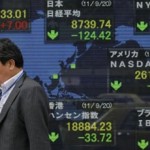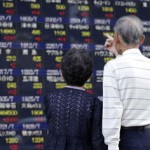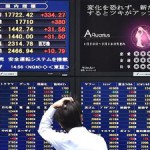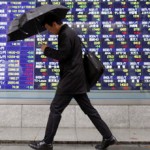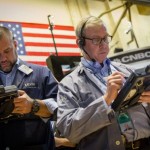Asian Stock Markets Bounce Back
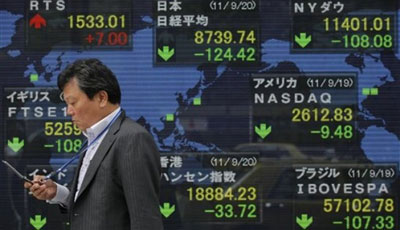
Regional markets come off multiyear lows ahead of Federal Reserve meeting
Most markets in Asia climbed back from their lowest levels in years on Wednesday, ahead of an announcement from the U.S. Federal Reserve on whether it would raise rates for the first time in almost a decade.
Hong Kong’s Hang Seng Index was up 1% at 21676.57, putting the benchmark up 5% from its close on Sept. 7, which had been its lowest since July 2013.
Australia’s S&P/ASX 200 was up 1.3%, having hit its lowest level in nearly two years on Aug. 24. South Korea’s Kospi was last up 1.7%, bouncing back from its lowest level in more than two years.
The Nikkei Stock Average, which was up 0.6%, has rallied nearly 5% from a seven-month low on Sept 8.
The Australian dollar, last at US$0.7140, was near its highest level in roughly two weeks.
A two-day meeting of the Federal Reserve, slated to start on Wednesday, could lead to the first interest-rate increase in almost a decade.
About 46% of business and academic economists surveyed by The Wall Street Journal in the week to last Friday predicted the Fed’s first rate increase would come at the Sept. 16-17 policy meeting. In early August, 82% of economists thought the Fed would raise rates in September.
U.S. stocks rallied to a more than two-week high Tuesday. U.S. government bonds sold off, sending the yield on the two-year note to the highest level since 2011, as haven assets became less attractive.
But many investors are hesitant to make big trades ahead of the Fed’s decision.
“I don’t think the market is fully pricing in the Fed moving or not,” said Adam Petryk, head of investment solutions at QS Investors, an asset manager owned by Legg Mason Inc. that focuses on quantitative equity strategies.
“Some of that uncertainty is leading to the volatility we’re seeing in the marketplace right now.”
In Asia, shares have been trading in a narrower range in recent sessions, stabilizing somewhat from an earlier summer selloff. But signs of slowdown in the Chinese economy still keep investors on edge. China has ramped up spending in recent months as the country showed more signs of weakness. Economic reports out of China over the weekend—factory output and fixed-asset investment—fell short of forecasts.
More than 40% of investors now see weak growth in China and other emerging markets as the main risk to financial markets over the next 12 months, according to a survey published by Barclays on Tuesday.
On Wednesday, the Shanghai Composite Index was up 0.2% at 3009.57.
It is up 2.6% from its recent bottom on Aug. 26, even as trading in recent sessions has been rocky as Beijing intensifies its crackdown on illegal margin loan accounts. Borrowing had allowed local investors to bid up the market quickly in the yearlong rally leading up to China’s market peak in June.
Authorities estimate more than 2,000 illicit accounts are waiting to be cleared, with a combined market cap of around $29.5 billion. Analysts say the actual size of those funds is larger.
An investigation by Chinese police into signs of what they term “abnormal trading” has also put a chill on China’s markets. Authorities on Tuesday stepped up pressure on the country’s largest and most globalized brokerage, Citic Securities Co., by announcingexpansion of a probe into possible insider trading by senior executives at the firm, including its president.
Total trading volume in the Shanghai and Shenzhen markets dropped by nearly 200 billion yuan to around 477 billion yuan on Tuesday, indicating a low level of interest in investing in China.
On Wednesday, Brent oil was up 0.7% at $44.91, while gold edged up 0.2% to $1104.30 a troy ounce.
Source: WSJ – Asian Stock Markets Bounce Back









